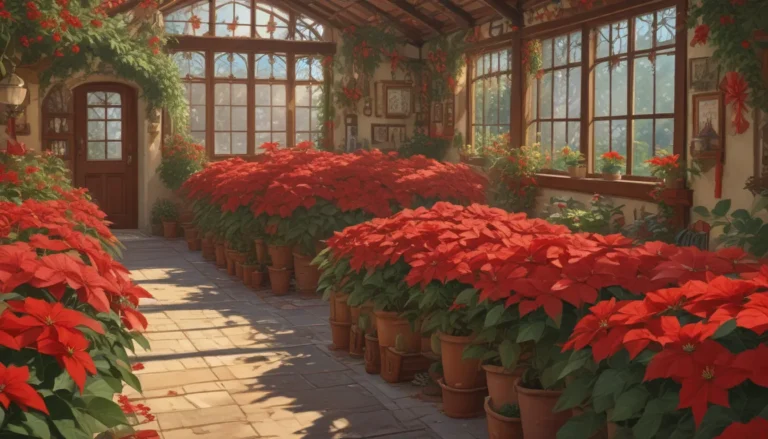Comprehensive Guide: How to Grow and Care for Carnations

Are you looking to add vibrant, fragrant, and easy-to-grow perennials to your garden? Look no further than carnations, also known as Dianthus caryophyllus. These fragrant, frilly flowers are not only a colorful addition to beds, borders, and containers but are also a must-have for cutting gardens.
In this comprehensive guide, we will explore everything you need to know about growing and caring for carnations, from their history and cultivation to propagation, pruning, and maintenance. So grab your gardening gloves and let’s dive in!
What Are Carnations?
Carnations are herbaceous perennials that can grow up to 30 inches tall, forming attractive clumps or mats. These flowers have fringed petals that exude a sweetly spicy fragrance of cloves, making them a delightful addition to any garden.
The flowers come in a variety of colors, including peach, pink, salmon, scarlet, red, white, yellow, and even purple. Most carnations are hardy in USDA Zones 5 to 9 and bloom from mid-spring to midsummer.
Cultivation and History
Thought to be native to the Mediterranean region, carnations have a long history dating back to ancient Greek and Roman times. The genus name, Dianthus, is derived from Greek words for divine and flower, reflecting the beauty and fragrance of these blooms.
Carnations were used in ceremonial crowns and are still symbolic of love and affection in many cultures. There are three main types of carnations: tall, large-flowered cultivars, spray or dwarf varieties, and other popular garden species within the Dianthus genus.
Propagation
Carnations can be propagated through root division, seed, or stem cuttings. Root division is a great way to rejuvenate old plants, while stem cuttings are preferred by professional growers for propagation. Seeds can be started indoors or sown directly in the ground, though direct-sown seeds may not flower until the second year.
How to Grow
Carnations thrive in fertile, humus-rich soil with a pH of 6.7 to 7.0 and require full sun with some shade in hot regions. Proper spacing, watering in the morning, and supporting taller varieties are essential for healthy growth. Container-grown carnations need well-draining, humus-rich soil and should be watered more frequently.
Growing Tips
For healthy and vibrant carnations, follow these growing tips:
- Plant in full sun with afternoon shade in hot regions.
- Ensure proper spacing and water in the morning to prevent fungal infections.
- Tall varieties may need support to hold stems upright.
- Divide clumps every three to five years for rejuvenation.
Pruning and Maintenance
Regular watering, deadheading, and fertilizing are essential for a long flowering season. Staking tall cultivars and dividing plants every few years help maintain plant health. Removing dead materials and controlling pests and diseases is crucial for healthy carnations.
Cultivars to Select
With hundreds of cultivars to choose from, here are a few popular options to get you started:
- CanCan Scarlet: A vividly colored, highly fragrant cultivar.
- Chabaud Blend: A mix of fragrant, ruffled flowers in various colors.
- La France: A delicately fringed, blush pink heirloom cultivar.
- Magenta: A brilliant raspberry red spray carnation.
- Marie Chabaud: A sweetly fragrant, pale lemon yellow cultivar.
- Memories: A highly scented dwarf variety with pure white blooms.
- Orange Sherbet: Coral and salmon double petaled flowers with a strong fragrance.
Managing Pests and Disease
While carnations are bred for disease resistance, pests like aphids, mites, and thrips can still be problematic. Diseases like bacterial wilt and fusarium wilt can be fatal to plants. Good cultural practices, including proper watering and air circulation, can help prevent pest and disease issues.
Best Uses
Carnations are versatile plants that add color and fragrance to a variety of settings, including beds, borders, containers, and cutting gardens. They are also ideal for butterfly, cottage, and rock gardens. Whether you enjoy their blooms in the garden or as cut flowers indoors, carnations are a must-have for any garden enthusiast.
Incorporate these bright and fragrant flowers into your garden to enjoy their beauty and charm throughout the growing season. Share your experiences of growing carnations in the comments below!
For more information on Dianthus and related plants, check out these guides:
– How to Grow and Care for Dianthus Flowers
– How to Plant and Grow Sweet Williams
– How to Grow and Care for Firewitch Dianthus
Images courtesy of Arbico Organics, Botanical Interests, Eden Brothers, Gardener’s Supply Company, Nature Hills Nursery, True Leaf Market, and Walmart.





